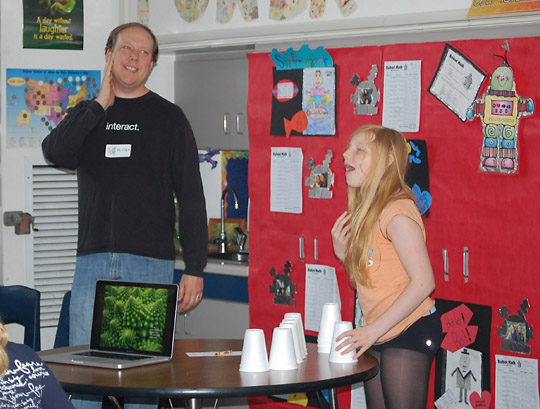On Friday I had the pleasure of talking to about 60 fifth graders from Robinson Elementary School in Redondo Beach. The school was having its annual “I am a Scientist!” Day which gets students excited about science through fun demonstrations and talks from members of the science community. The presentations this year included a wide-variety of topics such as the science of magic, science and engineering in a refinery, robotics, and matter and reactions.
My talk was about physics. We learned that physics is the study of matter and energy, that matter is anything that takes up space and has mass, and that energy is the ability to do work. I told them that Einstein is regarded as the father of modern physics because he was able to relate matter and energy through his world-famous equation.
 |
| The air flow from the wing of this airplane is shown by colored smoke rising from the ground. The swirl at the wingtip traces the aircraft’s wake vortex. |
Afterwards, we did a neat demonstration of how to create a vortex using a closed cardboard box with a circle cut out of the side and a fog machine. Everyone in the class was able to create a vortex and use it to knock over a stacked pyramid of styrofoam cups. It was a fun day and I was very impressed by how knowledgeable the kids were. Also, a big thanks to my daughter Daniella who was my capable assistant for the day. Hopefully we can do it again next year!



